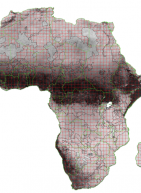DP17857 Climate Risks and FDI
Climate-related risks have increased in recent decades, both in terms of the frequency of extreme weather events (physical risk) and the implementation of climate-change mitigation policies (transition risk). This paper explores whether multinational firms react to such risks by altering their presence in countries that are more affected. We measure this by examining foreign direct investment (FDI) dynamics at different levels of aggregation as well as at the firm level. We propose a theoretical framework for firm production location choice that explicitly incorporates transition and physical risks. The model predicts a reduction in FDI resulting from both physical and transition risks but an ambiguous interaction effect of these risks with emission productivity. In an extensive empirical analysis, we find some support for model predictions, but overall we do not find consistent evidence for statistically significant effects of physical and transition risks on FDI. However, firm-level evidence suggests that firms that are more exposed to climate risks react more negatively to physical climate risk following Paris Climate Accord. We also find that FDI outflows following extreme weather events from affected countries are smaller for industries with higher emission productivity (greener industries). Our theory and empirical results point to the importance of accounting for heterogeneity in emission productivity when analyzing the effects of climate risks.

